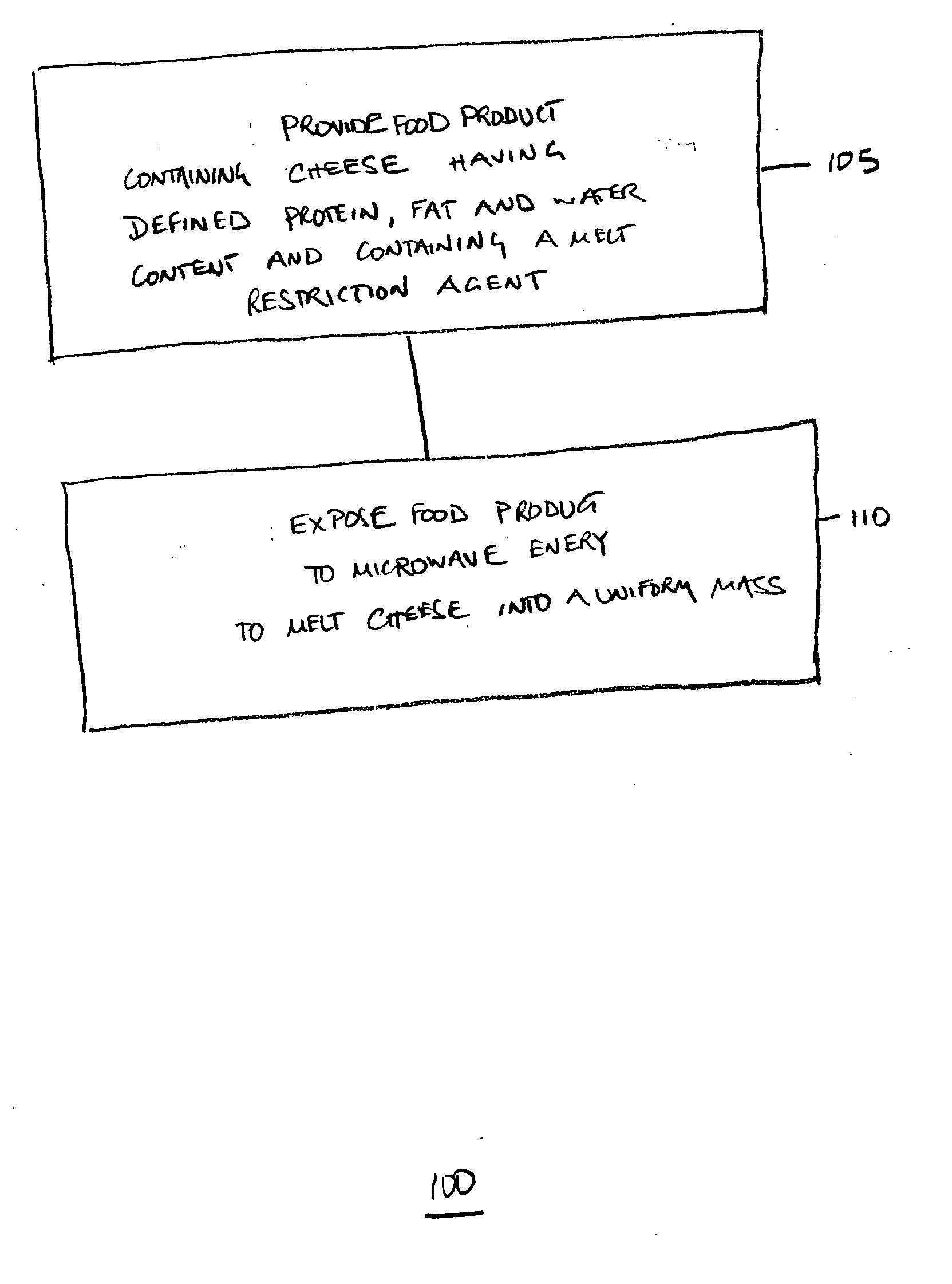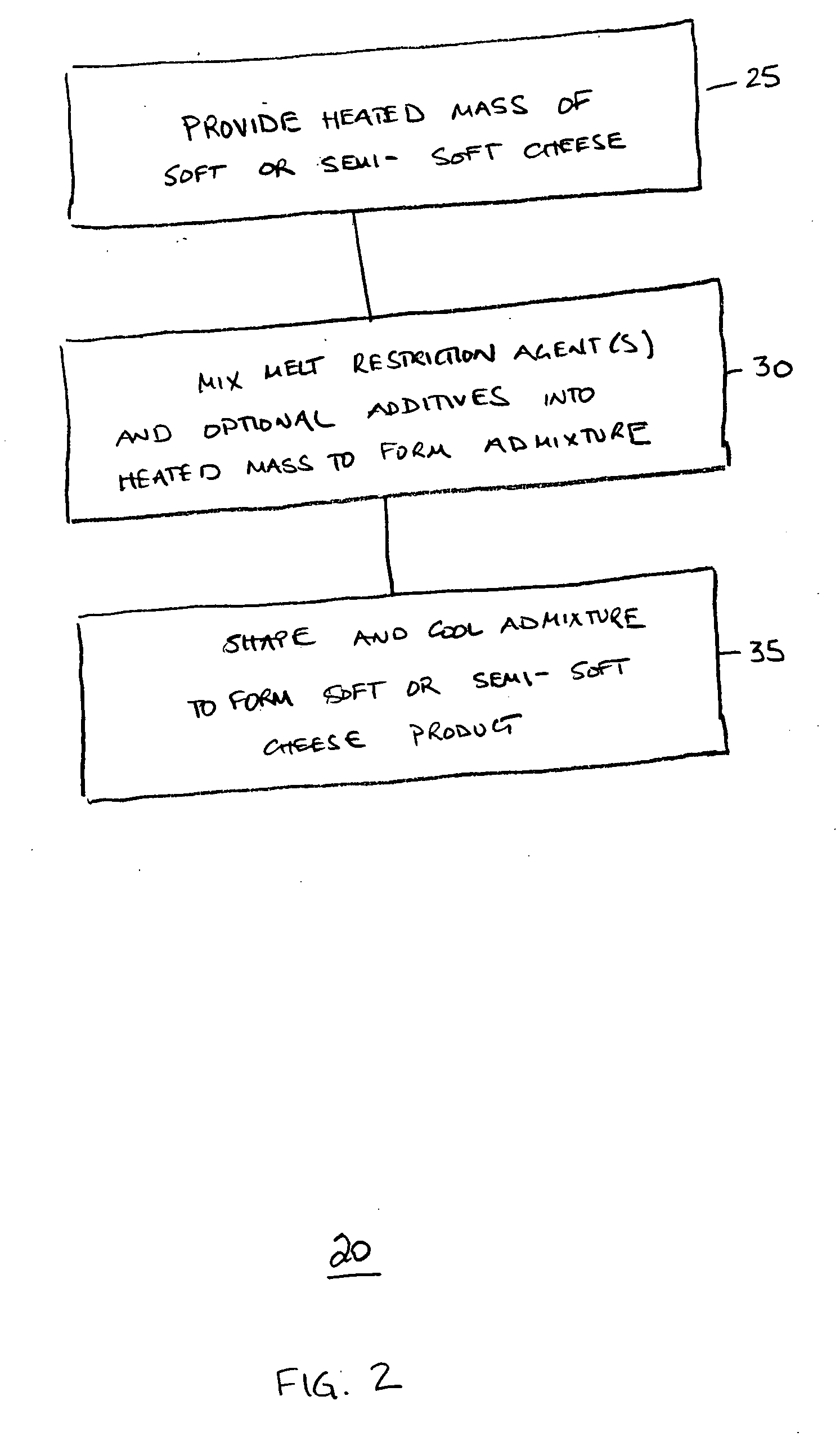Cheese for cooking in the microwave
a microwave and cheese technology, applied in the field of cheeses, can solve the problems of insufficient or even inexistent amount of cheese, difficult to formulate a cheese with the desired melt down characteristics, and insufficient quantity of cheese. achieve the effect of good melt down performan
- Summary
- Abstract
- Description
- Claims
- Application Information
AI Technical Summary
Benefits of technology
Problems solved by technology
Method used
Image
Examples
example i
[0100] This example was conducted to compare the melt characteristics of a standard mozzarella type cheese (control cheese) lacking any melt restriction agent with that of a mozzarella variety cheese that included 2 wt. % starch (test cheese). The composition of the control cheese was 53% moisture, 47% FDB, and 23% protein. The composition of the test cheese was 53.5% moisture, 44% FDB, 24% protein and 2% starch by weight.
[0101] Testing of the melt performance of the two cheeses involved separately loading 50 g of diced, frozen control or test cheese into separate 3″ diameter ring that was 1″ deep and then positioning the rings in the center of separate 8″ plates. The ring was then removed, leaving a mound of cheese at the center of the plate (FIGS. 5A and B). The plate was subsequently placed into a Kenmore brand household microwave oven (model #721.68360790) and the cheese cooked at the high setting for 2 minutes.
[0102] As can be seen in FIG. 5C, the standard mozzarella cheese m...
example ii
[0104] The cheeses utilized in this example were specifically designed for optimum performance on a frozen pizza to be cooked in a microwave. The test cheeses used in this trial had a moisture composition of 46.5-51.5%, a protein level of 17-25% protein, and a fat content of 37.0-43.0% on a dry basis. The cheese included 2% starch to give it improved melting performance in a microwave. The product also had 2% non-fat dry milk, 0.50% natural dairy flavors, and 0.0025% annatto coloring added to give the cheese the visual and organoleptic attributes desired in this application. This test cheese displayed a much more desirable melt appearance on a cooked pizza as compared to a control cheese that had the same composition, with the exception that the starch was omitted. While the test cheese had a very good cheese yield appearance on the cooked pizza, the cheese made without starch had an over melted appearance, with the cheese actually melting off of the pizza such that very little chee...
PUM
 Login to View More
Login to View More Abstract
Description
Claims
Application Information
 Login to View More
Login to View More - R&D
- Intellectual Property
- Life Sciences
- Materials
- Tech Scout
- Unparalleled Data Quality
- Higher Quality Content
- 60% Fewer Hallucinations
Browse by: Latest US Patents, China's latest patents, Technical Efficacy Thesaurus, Application Domain, Technology Topic, Popular Technical Reports.
© 2025 PatSnap. All rights reserved.Legal|Privacy policy|Modern Slavery Act Transparency Statement|Sitemap|About US| Contact US: help@patsnap.com



